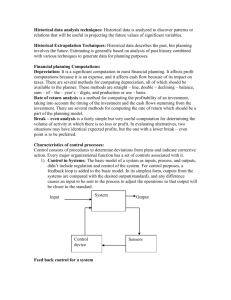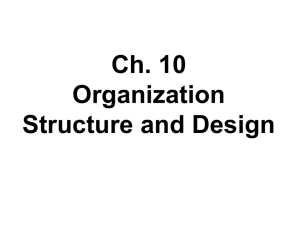Basic Characteristics of Organizational Structure
advertisement
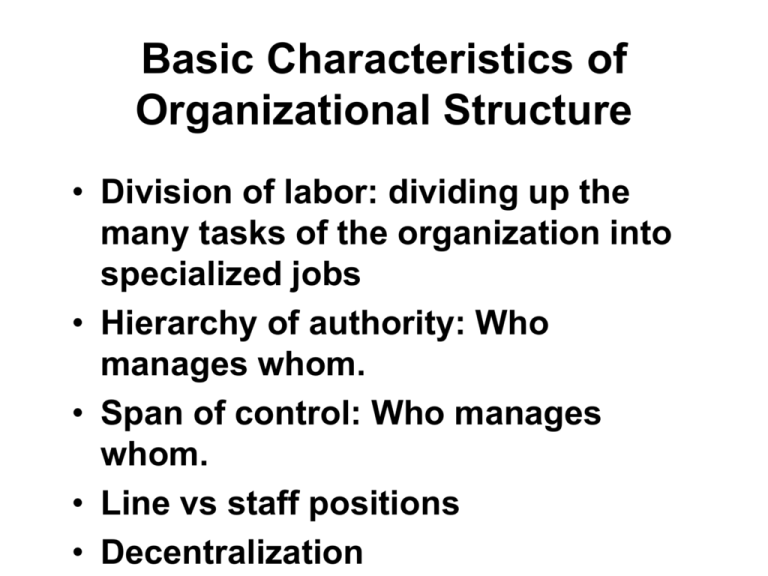
Basic Characteristics of Organizational Structure • Division of labor: dividing up the many tasks of the organization into specialized jobs • Hierarchy of authority: Who manages whom. • Span of control: Who manages whom. • Line vs staff positions • Decentralization Hierarchy of Authority • • • • Tall vs flat hierarchies Autonomy and control Communication Size Span of Control • A wide span of control: a large number of employees reporting, • A narrow span of control: a small number employees reporting • The appropriate span of control depends on the experience, knowledge and skills of the employees and the nature of the task. Line vs Staff Positions • Line vs Staff: – Line positions are those in which people are involved in producing the main goods or service or make decisions relating to the production of the main business. – Staff positions These are positions in which people make recommendations to others but are not directly involved in the production of the good or service Decentralization • The extent to which decision making is concentrated in a few people or dispersed through out the organization • Advantage: benefits associated with greater participation and moving the decision closest towards implementation • Disadvantage: Lack of perspective and information, lack of consensus Functional Structure CEO Manufacturing Sales R&D Accounting & Finance Advantage: efficiency, communication Disadvantage: isolation of units Product Structure CEO Soup Division Manufaacturing Nuts Division Sales Manufacturing Sales Advantages: Product focus, flexibility Disadvantage: Duplication of effort Market Structure CEO Corporate Customers Sales Customer Service Individual Customers Sales Customer Service Geographic Structure CEO West Sales Customer Service East Sales Customer Service Matrix Structure R&D Product A Product B Product C Engineering Manufact’ing Integration • • • • Hierarchy of authority Liaison roles Teams, committees, task forces Standardization & formalization Mechanistic & Organic Designs • Mechanistic: tallness in hierarchy, specialization, centralization in authority, formalization. Work best under stable conditions • Organic: flatness, generalization, decentralization flexibility Best fit dynamic conditions and complex technology Designs and Dimensions Dimension Organic Mechanistic Control span Wide Narrow Authority Few Many Formalizat’n Low High Centralizat’n Low High Position Power Low High Expert Power Low High Effectiveness Criteria • • • • Output approach Internal process approach Systems resource approach Stakeholder approach Effectiveness & Structure • Size and structure – Complexity – Differentiation – Decentralization – Formalization • Structure and satisfaction – Decentralization – Span of control Backwards & Forwards • Summing up: Today we examined the characteristics of organizational structure, differentiation and coordination. Mechanistic and organic designs were discussed and organizational effectiveness • Looking ahead: Next time we explore environments, culture, technology and structure.
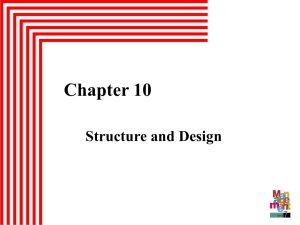
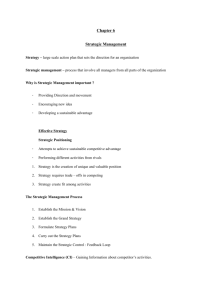
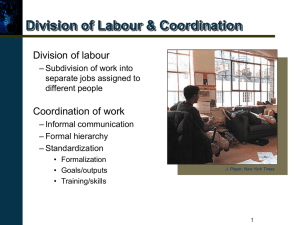
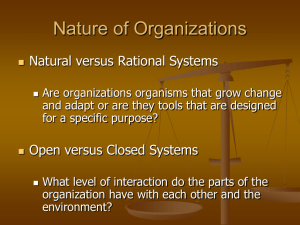
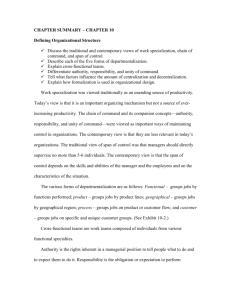
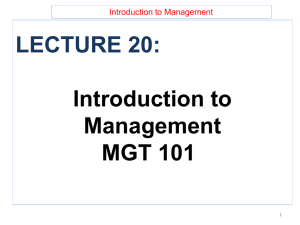
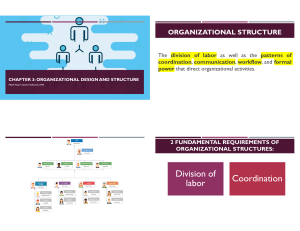
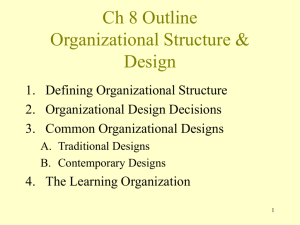
![[SUMMARY] Manajemen (Chapter 10)](http://s3.studylib.net/store/data/008743248_1-4e2b946756cf43cea567b50ee8fe6208-300x300.png)
